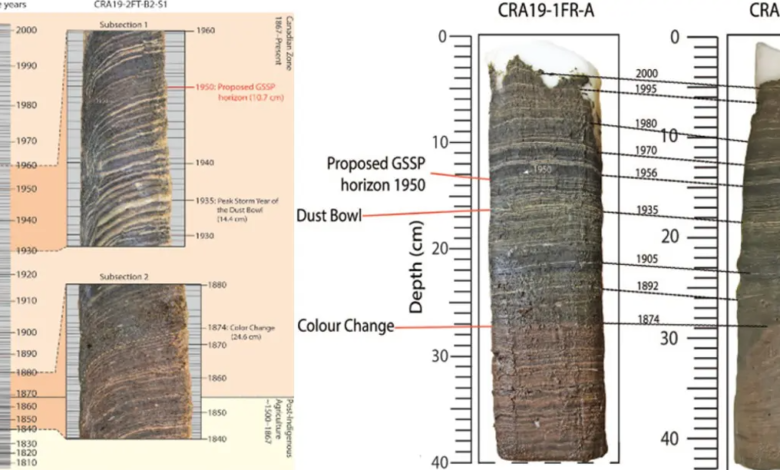The Anthropocene begins with plutonium at the bottom of a lake in Canada

The Antropocene Working Group has chosen the candidate site to define the beginning of the new geological era
(sustainabilityenvironment.com) – Since the 1950s the Earth has entered a new geological era. An era that bears the mark of man like no previous period. That is, plutonium dispersed with the beginning of atomic testing in the 1950s. And the remains of the burning of coal, oil and gas. This is our signature on the history of the Earth that opens the door to the Anthropocene.
This was established by the Anthropocene Working Group (AWG), an interdisciplinary working group created in 2009 by the International Commission on Stratigraphy (CIS). The task? To decide if the age we live in is different from Lochene, the geological age conventionally started 11,700 years ago at the end of the last ice age. And identify strong geological clues, the so-called “golden spikes”, to support the hypothesis. Before the Anthropocene is officially recognized as a full-fledged geological epoch, however, it still needs the final ok of the CIS.
Define the Anthropocene
Determining if the Anthropocene exists and what defines it is not just a technical issue. Recognizing the impact of man’s way of life on Earth is a first step in affirming that the consequences of how we produce and consume are global and are affecting the entire Planet. It means, in other words, recognizing that what we often call “climate crisis” is actually a “planetary crisis“. That is to say, a multiple crisis, which touches not only the climate, but also the issue of pollution and the loss of biodiversity, as the latest IPCC report explains.
Not only. To speak of Anthropocene as it was geological means to take note that we cannot go back: the condition in which our great- or great-grandfathers have still lived is unrepeatable. We are in a different world to which we must adapt. This certainly does not mean that there is no point in trying to cut emissions and limit global warming. Rather, it means feeling more the urgency of mitigating global warming and the need to accelerate adaptation.
But to do that, you have to radically change the way we live, because we are no longer in Loco. Recognizing the Anthropocene, after all, means aiming for transformative changes and throwing in the trash the false solutions that today’s climate action teems with.
Man’s age emerges in Canada
The choice of what determines, from the point of view of geology, the beginning of the Anthropocene, leads to Canada. The working group opted for the sediments of Lake Crawford, in the province of Ontario (2.4 hectares of surface and 24 meters deep), as a “very clear signal” of the start of a new geological era. Among the 12 candidates considered there was also an Italian site, the stalactites of Ernesto’s cave in Valsugana. The sediments that have accumulated on the bottom of the lake contain clear traces of human activity and its magnitude. In the carrots studied by the AWG are found several contaminants, including grains of ash brought by the wind that originate from the combustion of fossil sources and traces of radioactive plutonium derived from nuclear tests.
Lake Crawford was supported by 60% of AWG members. The others preferred an alternative site: another lake in China, Sihailongwan. Which unlike the Canadian one, claims the minority of geologists, is not so influenced by local activities (the Canadian fossil industry) and is therefore more representative of a global condition.
Other scientists who are not part of the AWG, on the other hand, are opposed to identifying the golden spike of the Anthropocene in such a recent era and would prefer a date further back in time, reflecting the fact that humanity has been impacting the Planet for a long time. Many studies, in fact, have proved the decisive influence of man on the environment at least since the beginning of the first civilizations, which coincides with the start of the Olocene. Other studies underline how man was able to radically transform the ecosystem in which he arrived even before, in the Pleistocene, for example through hunting.





